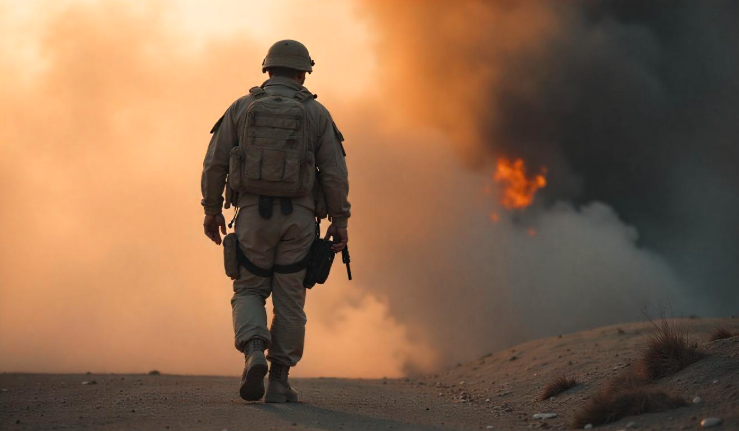Few things more stressful in this game than not being able to fit something useful into your inventory.
One of the most frustrating yet oddly satisfying parts of Escape from Tarkov is inventory management. Between the limited stash space, a mountain of barter items, and loot from every raid, your stash can become a chaotic mess in no time. For new players, the question isn’t just what should I loot, it’s what should I keep, what should I sell, and what’s even worth hoarding? This guide breaks down what items are worth keeping, what you should sell immediately, and how to organize your stash like a pro.
One of the most useful ways of tidying your inventory is buying stashes, and for that you need a lot of currency. Consider buying Escape from Tarkov rubles to skip a lot of the grind and stress in order to have a tidy inventory!
Why inventory management matters in Escape From Tarkov
Tarkov isn’t just about surviving gunfights. It’s also about surviving economically. Every item in your stash has weight, both literally and financially. Hoarding everything will lead to:
- A cluttered stash you can’t navigate
- Wasted time between raids
- Missed profit opportunities
- Poor gear rotation
By understanding item value and when to let go, you’ll become faster, wealthier, and more efficient.
General Rule: Know Your Goal
Before deciding what to keep or sell, ask yourself:
What’s your current priority?
- Early Wipe: Prioritize quest items and barter goods.
- Mid Wipe: Keep only items relevant to hideout upgrades or valuable trades.
- Late Wipe: Focus on PvP gear, meta items, and high-profit flipping.
With that in mind, let’s dive into each category.
Items you should always keep (At least early on)
Quest items
These are essential for completing tasks from traders. Selling them too early can set you back hours.
Examples:
- Salewa Medkits
- Gas Analyzers
- Morphine Injectors
- Secure Flash Drives
- Bronze Pocket Watch
- Car Batteries
- Wires and Capacitors (early hideout upgrades)
Use a Lucky Scav Junk box to store quest items and mark them with a yellow tag (for “Quests”). You’ll thank yourself later.
Barter items for hideout upgrades
Many items are needed to improve your hideout. Even if they don’t sell for much, they’re valuable long-term.
Some examples:
- Bolts, Screws, and Duct Tape (Workbench, Med station)
- Wires, Power cords, and CPU Fans (Generator)
- Fuel Tanks and Matches (Heating and Generator)
- Tool sets (for “Farming Part 1”)
Use the flea market to cross-reference what’s required for hideout upgrades. Don’t hoard more than necessary — just enough to unlock the next station or upgrade.
High-demand barter items
Some barter items may not be used in quests but are essential for trading with dealers or crafting high-end gear.
Some examples:
- GPUs (Graphics Cards): for the Bitcoin Farm and high-value trades
- LEDX: used in high-tier medical crafts
- Military Cables and T-Shaped Plugs
- Keys: Labs, Sanitar, and Reserve keys with known high loot value
If an item consistently fetches a high flea market price or is in demand for barter trades, stash it, especially if it’s rare!
Image generated with Freepik AI Suite
Items you should sell immediately
Low-tier armor and helmets
If it’s below level 3 durability, don’t bother repairing or storing it unless you’re completely broke. Armor is heavy, takes up space, and gets outdated fast.
Examples to sell:
- PACA Soft Armor
- Kolpak Helmets
- Half-broken UN Tactic armor
Low-tier armor may save your life once or twice, but you’ll quickly outgrow it.
Damaged or cheap weapons
If a weapon has poor ergonomics, low durability, or is just outdated, dump it. Many early players hoard every gun they find, but it clutters your stash fast.
Sell these:
- Broken SKS rifles
- Cheap pistols like the TT
- Unmodded AKs with low durability
Use the flea market to sell working guns. Sell broken guns to Mechanic or Prapor — whoever gives the best price!
Excess ammo
Ammo is one of Tarkov’s most complex systems. You don’t need 5 stacks of every caliber. Keep only the good stuff; sell or discard the rest.
If you’re unsure whether an ammo type is good, check out a quick guide or look it up on Escape From Tarkov’s Wiki.
Common barter trash
Not all barter items are worth keeping, especially those that flood the flea market.
Examples to sell:
- Soap
- Matches
- Crickent lighter
- Electric Drills (unless needed for a quest!)
If the item doesn’t go into a key hideout module, sell it. Keep only barter items that trade for guns, high-tier ammo, or armor.
How to organize your stash efficiently
A clean stash means a clear mind. Here’s how to maintain order:
Use containers strategically
- Lucky Scav Junkbox: Store barter and quest items.
- Ammo Case: Consolidate your best ammo.
- Med Case: Keep your meds organized and easy to grab.
- Weapon Case: Great for storing modded guns instead of leaving them in the stash grid.
Use tagging
Use colored tags to mark containers or items:
- Yellow = Quest items
- Red = High-value loot
- Blue = Crafting
- Green = Ready-to-use loadouts
Keep these in mind if you want easy and clear organization!
Stack Wisely
- Compress stacks whenever possible: ammo, meds, and currency.
- Mod and store “go-to” weapons so you can gear up fast between raids.
- Don’t hoard 20 helmets or 15 chest rigs. You only need 3 to 5 raid-ready sets.
Scav runs: A goldmine for inventory fillers
Scav runs are excellent for gathering barter goods and gear without the risk of losing your own loot. Prioritize:
- Fuel tanks (expensive and used in the hideout)
- Electronics (GPU, Tetriz, Powercords)
- Medical gear (IFAKs, Salewas, Propitols)
Even lower-tier guns looted as a Scav can be sold to traders for cash or stripped for parts.
Flea market vs. traders: Where to sell?
Once you hit level 15 and unlock the Flea Market, your options open up dramatically.
Sell to Traders If:
- The item is common and won’t sell well to players.
- You want fast cash without waiting for a sale.
- You’re dealing with broken gear or low-tier items.
Sell on Flea Market If:
- The item is in high demand (quest item, rare barter, etc.)
- It has more value than what traders offer.
- You’re flipping items for profit (buy low, sell high)
Check price history before listing. If an item drops below vendor value, sell to traders instead.
Final Tips
- If you haven’t used an item in 5 to 10 raids, sell it.
- Don’t keep items “just in case”. Stash space is more valuable than sentiment.
- Revisit your stash often to declutter.
- Streamline your loadout strategy. Use kits that share ammo, armor, and mags.
Image generated with Freepik AI Suite
In conclusion
Tarkov inventory management isn’t just Tetris, it’s strategy. Every square in your stash should serve a purpose, whether it’s for survival, profit, or progression. Learning what to keep and what to sell is an evolving skill, just like gunplay and map knowledge.
By keeping only what you need and selling what you don’t, you’ll have a cleaner stash, better cash flow, and faster prep time between raids. Over time, you’ll build an instinct for value, and that’s a skill as important as any headshot!


